Connect3D Radeon X800 XT Platinum Edition Review
Connect3D Radeon X800 XT Platinum Edition
We've finally got our hands on a retail Radeon X800 XT board - the performance was as expected but the price definitely wasn't.
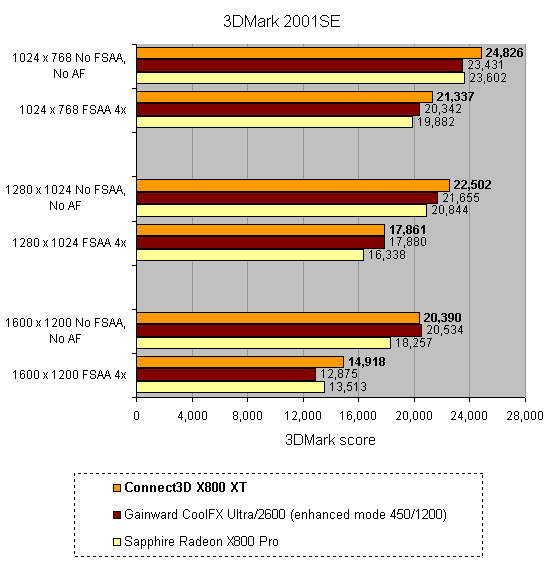
Verdict
Key Specifications
- Review Price: £316.00
It was way back in April that I attended the ATI Radeon X800 launch in Toronto, so it’s quite amazing that this is the first retail X800 XT board to make it into the TrustedReviews labs. There have been X800 Pro retail cards around for a while, but the XT has been rather conspicuous by its absence. The lack of X800 XT samples has allowed nVidia to steal a the limelight in the high-end graphics market, since the GeForce 6800 Ultra has been on sale for quite some time, but now ATI can redress the balance.
This card from Connect3D looks pretty much identical to the reference board that I saw all those months ago. So the PCB is finished in the traditional ATI red colour, while a large copper heatsink and fan assembly covers the VPU but not the memory chips. As with all the X800 cards, this one is a single slot solution, unlike the nVidia GeForce 6800 Ultra. This makes the X800 XT a high-end card that’s small form factor friendly. But it’s not just the size of this card that makes it a great solution for small form factor systems, it’s also far from power hungry – in fact this X800 XT draws marginally less power than the older Radeon 9800 XT. This is borne out by the fact that the X800 XT only sports a single Molex connector instead of the two seen on the 6800 Ultra.
On the backing plate you’ll find a DVI port and a D-SUB port, unlike the dual DVI ports seen on the GeForce 6800 Ultra. This means that if you want to drive two TFT screens, you’ll have to put up with an analogue signal on one of them. But making up for this is the fact that this card sports full ViVo functionality. In the box you’ll find a dongle cable that gives you both S-Video and composite video in and out. So, once again this makes this card ideal for a small form factor box, especially if you’re building an AV/PC for your living room. With the video output you can watch your movies or recorded video content on your TV. The video input also means that you can record programmes from other sources like set top boxes. You can also output component video for the best possible quality – there’s another cable in the box that splits out the component signals. Finally, you’ll find a DVI to D-SUB converter in case you don’t have a DVI port on your monitor.
The Radeon X800 XT Platinum Edition, to give it its full name, is ATI’s high-end part and is suitably equipped to wear that mantle. What you get is 16 pixel pipelines and six vertex pipelines. There’s 256MB of GDDR3 memory and a 256bit memory interface to go with it. This card also implements the low-k technology that was pioneered with the Radeon 9600 XT card, which is one of the reason that power draw is kept so low.
The clock speeds are pretty standard with the core running at 520MHz and the memory ticking along at 560MHz (1.12GHz effective). Although there’s 256MB of memory on board, ATI has foreseen that even this amount of memory may not be enough for future games. As such 3Dc was developed which can compress normal map textures to a ratio of 4:1. This means that larger and more complex normal maps can be used, without running out of texture memory. Of course games will need to be developed with 3Dc in mind for this to work, but since ATI has made 3Dc an open standard, hopefully it will see widespread utilisation.
Although the X800 cards support 3Dc, they don’t support Shader Model 3.0, whereas the GeForce 6800 series of cards do. How much of an issue this turns out to be still remains to be seen, but it’s one of the many weapons that will no doubt be used in the ongoing graphics card battle. Of course as shader instructions become longer and more complicated, the use of Shader Model 3.0 will become more prevalent, but it’s still hard to say when this will actually happen.
As far as performance goes this card sits neatly between the Gainward PowerPack! CoolFX Ultra running at 450MHz core and 600MHz memory (1.2GHz effective) and the Sapphire Radeon X800 Pro. Of course the standard clock speeds for a GeForce 6800 Ultra are 400MHz core and 550MHz for the memory (1.1GHz effective), but both the retail cards we’ve looked at so far have run at least 450MHz core and 600MHz for the memory. That said, there are some more GeForce 6800 Ultra cards in the labs right now running stock speeds, so it will be interesting to see how they measure up to this X800 XT.
You can see from the graphs that the this X800 XT can’t quite keep up with a GeForce 6800 Ultra running at the slightly faster 450MHz/1.2GHz settings. In fact it’s only in the older 3DMark 2001 SE where the X800 XT pulls ahead of the GeForce 6800 Ultra. Now even though the Gainward card is a very expensive watercooled solution, the XFX GeForce 6800 Ultra was a standard air cooled card and ran at similar speeds. What you can also see is that this card is reassuringly quicker than the Sapphire Radeon X800 Pro, showing that the ATI product line is performing exactly as it’s supposed to.
Connect3D has avoided the trend among graphics card manufacturers to ship its cards in massive oversized boxes. Instead this Radeon X800 XT ships in a box that’s just big enough to house the card and the cables, which in my opinion is no bad thing. Continuing this frugal ethos, Connect3D also doesn’t bother to ship any games in the box, which again isn’t a bad idea, since most enthusiasts have already got the games they want to play and will resent paying for software that they don’t need.
Of course cutting back on the packaging and the bundled software is only worth while if the saving is passed onto the customer, and thankfully that’s exactly what Connect3D has done. With a street price of £315.99 from Dabs this card looks like a bit of a bargain when it comes to high-end graphics solutions. Of course it’s still not cheap, but it’s a fair bit cheaper than much of the competition. If you’ve got your heart set on an X800 XT card, the Connect3D definitely looks like the one to go for. It may not have the snazzy packaging or games bundles, but it performs exactly as you’d expect it to and costs less that you might have thought.
”’Verdict”’
Not only is the Connect3D Radeon X800 XT Platinum Edition the first retail X800 XT board I’ve seen, but it’s also a bit of a bargain. OK, so a GeForce 6800 Ultra clocked at 450MHz is a faster card, but it also draws loads more power and won’t fit in a small form factor box. With this Connect3D board you’ve got a cutting edge graphics card that’s flexible enough to go in any type of system and won’t break the bank – what more could you ask for?
”’Test platform:”’
”3.4GHz P4 Extreme Edition, Abit AS8 mobo, 2x512MB PC3200 Adtec modules, Seagate Barracuda 7200.7 HDD.”

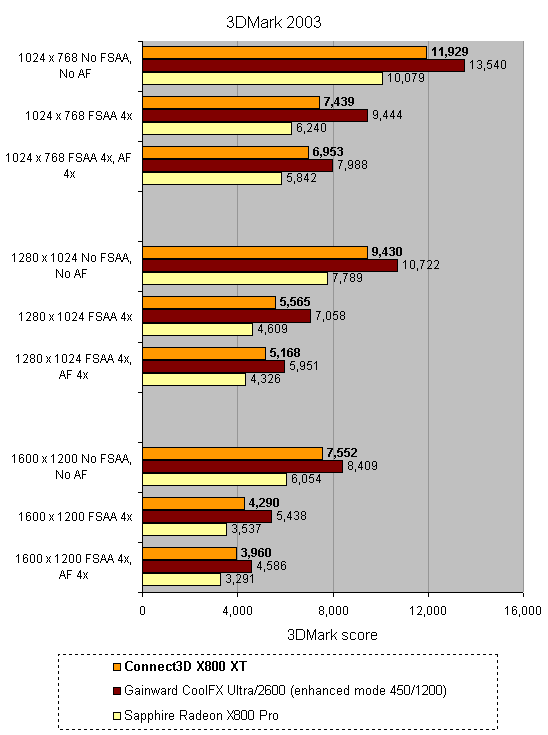
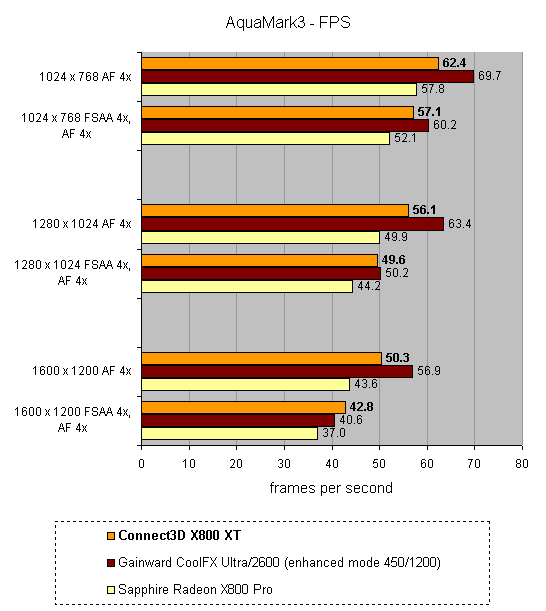
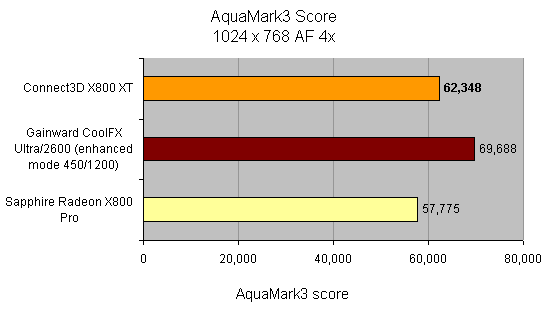
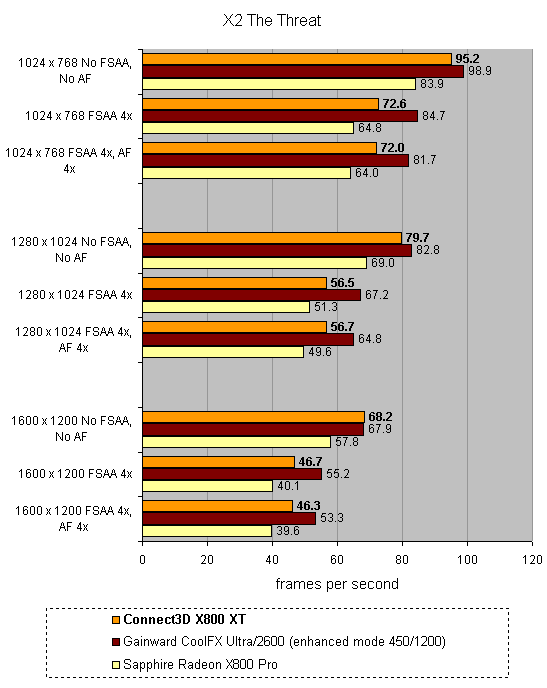
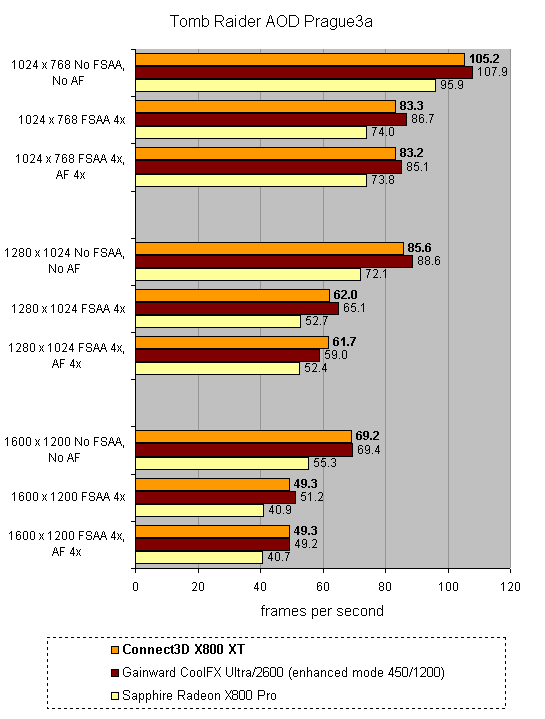
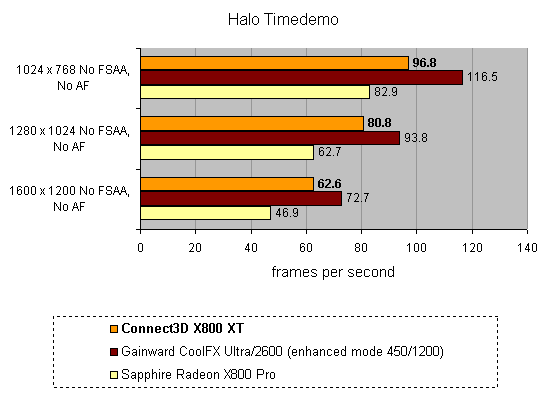
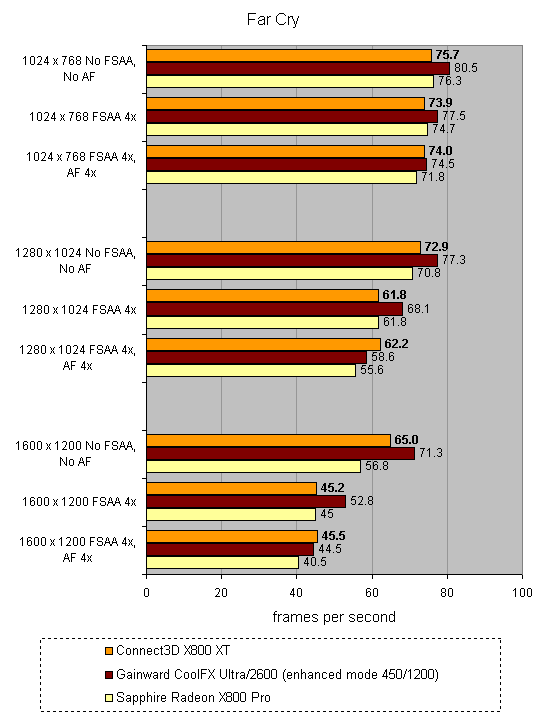
Trusted Score
Score in detail
-
Value 9
-
Features 9
-
Performance 9

